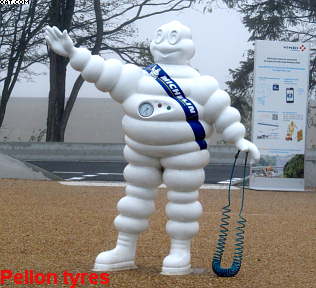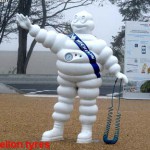V W Problem Heater: VAG cabin heating problem
Table of Contents
V W Problem Heater

V W Problem Heater
Importantly, this also includes the following car models: Audi A3 (8V chassis), VW Golf (mk7), Seat Leon (5F chassis), Skoda Octavia (7N chassis).
So, this article explains the repair instructions for a problem with the vehicle’s heater not working correctly. Fixing the heat exchanger blockage fixes the problem and is explained in this attached article!
Resolving Cabin Heater Problems in Volkswagen, Audi, Seat, and Skoda Automobiles
Greetings, esteemed group of automotive aficionados!
Presently, we shall delve into a prevalent concern that may induce chills within your Volkswagen, Audi, Seat, or Skoda. You need not worry if you’ve ever been stuck in a chilly vehicle with a cabin heater that simply won’t turn off; we’ve got your back.
Although several automobile models- V W Problem Heater
such as the Skoda Octavia (7N chassis), Audi A3 (8V chassis), VW Golf (mk7), and Seat Leon (5F chassis), have pleased numerous motorists. Even the most technologically advanced systems can occasionally fail to keep you warm and cosy.
The Issue: Cabin Heater Difficulties
Consequently, what exactly are these cabin heaters? Frequently, the problem arises due to an obstruction in the heat exchanger. This vital component can become clogged with grime, debris, and corrosion over time, impeding the proper circulation of hot coolant and the subsequent heating of the cabin.
However, have no fear, as resolving this issue is not as difficult as it may appear. Instructions on how to restore the functionality of the cabin heater are as follows:
Equipment and Materials Required: V W Problem Heater
Protective mitts and eyewear
One-dish pan
Set of sockets
The clasp pliers for hoses
A brand-new heat exchanger (available at dealerships for Volkswagen, Audi, Seat, or Skoda)
A kit for refrigerant funnels
New coolant (specific to your vehicle model)
First Step: Safety-First
Before beginning any work, ensure that your vehicle is situated on level ground and that the engine is completely cool. Gloves and protective eyewear are required, as you will be handling coolant.
(2) Remove the coolant
Identify the coolant discharge plug or valve located on the radiator of your vehicle. Carefully open the drain while positioning the drain pan underneath in order to extract the coolant. Be sure to dispose of the used coolant in accordance with the correct procedures.
Access the heat exchanger in Step 3.
There may be instances where accessing the heat exchanger requires the removal of interior ornamentation or panels. Consult the service manual for your vehicle model for specific instructions.
Step 4: Hose Disconnection
Identify the hoses connected to the heat exchanger and release and remove them using the hose clamp pliers. Anticipate the possibility of residual refrigerant escaping.
Remove the old heat exchanger in Step 5.
Remove the old heat exchanger’s mounting brackets by unbolting them. Remove it with caution from the vehicle.
Install the new heat exchanger in Step 6.
Install the newly installed heat exchanger and fasten it using the provided mounting fasteners. Reattach the hoses, ensuring that the hose connectors are used to secure them.
Step 7: Coolant Refill
Refill the coolant system with the proper coolant for your vehicle using the coolant funnel kit. Follow the manufacturer’s instructions regarding the correct coolant composition and quantity for your vehicle.
Eighth Step: Bleed the Air
Fuel the engine and allow it to operate while the heater is engaged. This will assist in the evacuation of any air pockets present in the system. Monitor the level of coolant and replenish it as necessary.
Step 9: Conduct a heat test
After the level of coolant has stabilised, inspect the cabin heater. Warm air should begin to enter the interior, signifying that the heat exchanger obstruction has been cleared.
Everyone, that concludes it! V W Problem Heater
By employing some do-it-yourself expertise and the proper equipment, it is possible to resolve the issues with the cabin heater in your Volkswagen, Audi, Seat, or Skoda and resume comfortable travel experiences. Keep yourself toasty outside!
Opus IVS has released details of the diagnostic support its IVS 360 VAG team offered to a technician requiring assistance with intermittent heat problems. Job sheet Makes and models: Audi A3 (8V chassis), VW Golf (mk7), Seat
So, looking back to the good old days,
. Then the modern driver knows nothing about car heating problems. As an old but active garage owner, I can go back in time to when certain cars were equipped with a blanket.
Yes, a blanket was provided to put over our laps, keeping us warm. Heaters were very finicky and fragile, often failing to work at all. Especially in cold winters. My first job as an apprentice mechanic brought me into contact with the first British Leyland minis.
These little cars were also freezing cold, with very ineffective heater systems that often failed the driver. Thankfully, things have changed a style including the addition of air conditioning to most car models these days.
Source: Problem job solved: VAG cabin heating not getting hot – Garagewire






Trackbacks & Pingbacks
[…] removed and a new one fitted. Here at Pellon Autocentre can repair most models of cars air con and heater systems in the Halifax area of West […]
Leave a Reply
Want to join the discussion?Feel free to contribute!